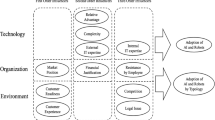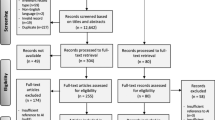Abstract
The intelligent bed, a mechanical hospital bed equipped with several electronic sensor functions, is an assistive healthcare solution intended to reduce the manual workload of health professionals by providing valuable real-time and non-vital information about patients. Implementation of the intelligent bed in the Chinese health care context has not been fully studied. The aim of this study was to explore the experiences of Chinese health professionals during a 12-month implementation period of the intelligent bed in a rehabilitation department at a large tertiary hospital in Guangzhou. A documentary study was carried out 3 months prior to implementation. Participant observation totalling 35 h and qualitative semi-structured interviews with 9 h and 50 min were conducted over a 12-month testing period. Findings in this study highlighted the improved working ergonomics of the intelligent bed in comparison with regular hospital mechanical beds. The bed’s other advanced functions, however, were either not used by the staff, quickly abandoned after a month, or never fully implemented. Barriers to full implementation of the bed’s functions were the Chinese hierarchical organizational culture, inadequate training of the health professionals on the implementation of the intelligent bed, lack of user-friendliness, and insufficient technical support.





Similar content being viewed by others
References
Li, J. (2010). Research on work satisfaction and willing of leaving jobs of nursing staffs. Shanghai Nursing, 10(2), 83–87.
Yang, T., & Zhang, X. (2011). Investigation and analysis on nurses’ feeling of accomplishments in China. Work Secures the World, (1), 53–55.
Hesketh, T., Wu, D., Mao, L., & Ma, N. (2012). Violence against doctors in China. BMJ, 345, e5730. doi:10.1136/bmj.e5730.
Chinese Medical Doctor Association. (2011). The fourth time inquiry on the careers of doctors. http://www.cmda.net/gongzuodongtai/zhinengbumen/2011-08-08/9778.html. Accessed April 18, 2016.
Yang, J., & Gao, L. (2015). The investigation on health care staffs’ attitudes towards their children choosing nursing as a career. Education Teaching Forum (3), 73–74.
The National Office on Elders. (2006). The prediction of aging population trend in China. http://news.xinhuanet.com/video/2006-10/11/content_5467909.htm. Accessed April 17, 2016.
Liao, Y. (2013). The development and trend of the intelligent bed. Medical Equipment, 2(10), 5–7.
Ge, X. (2014). Developments on smart home intelligent bed and health status monitoring system based on the internet of things. Management and Technology of Small and Medium Size Enterprise, (9), 241–242.
Pu, W., Li, M., Yu, H., Shen, L., Chen, R., & Ding, H. (2007). Design of an intelligent nursing bed with fall-proof function. Journal of Clinical Rehabilitative Tissue Engineering Research, 11(48), 9765–9767.
MacNeill, V., Sanders, C., Fitzpatrick, R., Hendy, J., Barlow, J., Knapp, M., et al. (2014). Experiences of front-line health professionals in the delivery of telehealth: A qualitative study. The British Journal of General Practice: The Journal of the Royal College of General Practitioners, 64(624), e401–e407. doi:10.3399/bjgp14X680485.
Hu, P. J., Chau, P. Y. K., Sheng, O. R. L., & Tam, K. Y. (1999). Examining the technology acceptance model using physician acceptance of telemedicine technology. Journal of Management Information Systems, 16(2), 91–112. doi:10.2307/40398433.
Menachemi, N., Burke, D., & Ayers, D. (2004). Factors affecting the adoption of telemedicine—A multiple adopter perspective. Journal of Medical Systems, 28(6), 617–632. doi:10.1023/B:JOMS.0000044964.49821.df.
Cai, H., Toft, E., & Dinesen, B. (2015). A conceptual framework for the effect evaluation of the intelligent bed. Wireless Personal Communications, 80(4), 1405–1414. doi:10.1007/s11277-014-2090-7.
Venkatesh, V., & Davis, F. D. (2000). A theoretical extension of the technology acceptance model: Four longitudinal field studies. Management Science, 46(2), 186–204. doi:10.1287/mnsc.46.2.186.11926.
Davis, F. D., Bagozzi, R. P., & Warshaw, P. R. (1989). User acceptance of computer technology: A comparison of two theoretical models. Management Science, 35(8), 982–1003. doi:10.1287/mnsc.35.8.982.
Davis, F. D., & Venkatesh, V. (1996). A critical assessment of potential measurement biases in the technology acceptance model: Three experiments. International Journal of Human–Computer Studies, 45(1), 19–45. doi:10.1006/ijhc.1996.0040.
Davis, F. D. (1989). Perceived usefulness, perceived ease of use, and user acceptance of information technology. MIS Quarterly, 13(3), 319. doi:10.2307/249008.
Cai, H., Toft, E., Hejlesen, O., Hansen, J., Oestergaard, C., & Dinesen, B. (2015). Health Professionals’ User Experience of the intelligent bed in patients’ homes. International Journal of Technology Assessment in Health Care, First View,. doi:10.1017/S0266462315000380.
Yin, R. K. (2013). Case study research-design and methods (5th ed.). Los Angeles: SAGE Publications.
Yin, R. K. (1999). Enhancing the quality of case studies in health services research. Health Services Research, 34(5 Pt 2), 1209–1224.
Mays, N., & Pope, C. (2000). Qualitative research in health care. Assessing Quality in Qualitative Research. BMJ, 320(7226), 50–52. doi:10.1136/bmj.320.7226.50.
Ammenwerth, E., Iller, C., & Mansmann, U. (2003). Can evaluation studies benefit from triangulation? A case study. International Journal of Medical Informatics, 70(2–3), 237–248. doi:10.1016/S1386-5056(03)00059-5.
Noor, K. B. M. (2008). Case study: A strategic research methodology. American Journal of Applied Sciences, 5(11), 1602–1604. doi:10.3844/ajassp.2008.1602.1604.
Patton, M. Q. (1999). Enhancing the quality and credibility of qualitative analysis. Health Services Research, 34(5 Pt 2), 1189–1208.
Britten, N. (1995). Qualitative research: Qualitative interviews in medical research. BMJ, 311(6999), 251–253. doi:10.1136/bmj.311.6999.251.
Cleary, M., Horsfall, J., & Hayter, M. (2014). Data collection and sampling in qualitative research: Does size matter? Journal of Advanced Nursing, 70(3), 473–475. doi:10.1111/jan.12163.
Rogers, E. M. (2003). Diffusion of innovations (5th ed.). New York: Free Press.
Brinkmann, S., & Kvale, S. (2014). Interviews: Learning the craft of qualitative research interviewing (3rd ed.). Los Angeles: SAGE Publications.
DiCicco-Bloom, B., & Crabtree, B. F. (2006). The qualitative research interview. Medical Education, 40(4), 314–321. doi:10.1111/j.1365-2929.2006.02418.x.
Dinesen, B., & Toft, E. (2009). Telehomecare challenge collaboration among healthcare professionals. Wireless Personal Communications, 51(4), 711–724. doi:10.1007/s11277-009-9767-3.
Dinesen, B., Huniche, L., & Toft, E. (2013). Attitudes of COPD patients towards tele-rehabilitation: A cross-sector case study. International Journal of Environmental Research and Public Health, 10(11), 6184–6198. doi:10.3390/ijerph10116184.
Zhang, L. (2013). Invention of intelligent assistive devices in China: Today and future. Chinese Journal of Rehabilitation Theory and Practice, 19(5), 401–403. doi:10.3969/j.issn.1006-9771.2013.05.001.
Zhai, J., Xu, X., Liu, C., & Xie, C. (2010). Design study of a novel intelligent health care and monitoring bed. Journal of Machine Design, 27(8), 35–37, 82, doi:10.13841/j.cnki.jxsj.2010.08.022.
Cooke, F. L., & Zhan, C. (2013). Between market and bureaucracy: Public healthcare reforms in China and nurses’ terms and conditions. The International Journal of Human Resource Management, 24(16), 3178–3195. doi:10.1080/09585192.2013.775034.
Sirois, P., Fournier, H., Lebouthilier, A., Guerette-Daigle, L., Robichaud, S., Leblanc-Cormier, G., et al. (2013). Nurses’ perceptions and attitudes towards new ADU technology and use. Technology and Health Care, 21(1), 41–47. doi:10.3233/Thc-120708.
Gagnon, M. P., Orruno, E., Asua, J., Abdeljelil, A. B., & Emparanza, J. (2012). Using a modified technology acceptance model to evaluate healthcare professionals’ adoption of a new telemonitoring system. Telemedicine and e-Health, 18(1), 54–59. doi:10.1089/tmj.2011.0066.
Brewer, E., Demmer, M., Ho, M., Honicky, R. J., Pal, J., Plauche, M., et al. (2006). The challenges of technology research for developing regions. Pervasive Computing, IEEE, 5(2), 15–23. doi:10.1109/MPRV.2006.40.
Broens, T. H. F., Huis in’t Veld, R. M. H. A., Vollenbroek-Hutten, M. M. R., Hermens, H. J., van Halteren, A. T., & Nieuwenhuis, L. J. M. (2007). Determinants of successful telemedicine implementations: A literature study. Journal of Telemedicine and Telecare, 13(6), 303–309. doi:10.1258/135763307781644951.
Knibbe, J. J., & Friele, R. D. (1996). Prevalence of back pain and characteristics of the physical workload of community nurses. Ergonomics, 39(2), 186–198. doi:10.1080/00140139608964450.
Yip, Y. B. (2001). A study of work stress, patient handling activities and the risk of low back pain among nurses in Hong Kong. Journal of Advanced Nursing, 36(6), 794–804. doi:10.1046/j.1365-2648.2001.02037.x.
Rufo, R. (2011). Behind the scenes with integrated telemedicine. Nursing Management (Springhouse), 42, 6–9. doi:10.1097/01.numa.0000406582.33874.16.
Kocher, R., & Sahni, N. R. (2011). Rethinking Health Care Labor. New England Journal of Medicine, 365(15), 1370–1372. doi:10.1056/NEJMp1109649.
Kidholm, K., Ekeland, A. G., Jensen, L. K., Rasmussen, J., Pedersen, C. D., Bowes, A., et al. (2012). A model for assessment of telemedicine applications: Mast. International Journal of Technology Assessment in Health Care, 28(1), 44–51. doi:10.1017/S0266462311000638.
Karsh, B. T. (2004). Beyond usability: Designing effective technology implementation systems to promote patient safety. Quality and Safety in Health Care, 13(5), 388–394. doi:10.1136/qhc.13.5.388.
Aggelidis, V. P., & Chatzoglou, P. D. (2009). Using a modified technology acceptance model in hospitals. International Journal of Medical Informatics, 78(2), 115–126. doi:10.1016/j.ijmedinf.2008.06.006.
Stowe, S., & Harding, S. (2010). Telecare, telehealth and telemedicine. European Geriatric Medicine, 1(3), 193–197. doi:10.1016/j.eurger.2010.04.002.
Demiris, G., Charness, N., Krupinski, E., Ben-Arieh, D., Washington, K., Wu, J., et al. (2010). The role of human factors in telehealth. Telemedicine and e-Health, 16(4), 446–453. doi:10.1089/tmj.2009.0114.
Koumaditis, K., Themistocleous, M., & Cunha, P. R. D. (2013). SOA implementation critical success factors in healthcare. Journal of Enterprise Information Management, 26(4), 343–362. doi:10.1108/JEIM-06-2012-0036.
Yao, W., Chu, C. H., & Li, Z. (2012). The adoption and implementation of RFID technologies in healthcare: A literature review. Journal of Medical Systems, 36(6), 3507–3525. doi:10.1007/s10916-011-9789-8.
Acknowledgments
The authors would like to thank Mr. Hjalte Holm Andersen and Ms. Ida Munk Petersen for their comments on the article. We also wish to thank the Department of Health at Guangdong Province, the Royal Danish Consulate General in Guangzhou, and Guangdong Provincial Hospital of Chinese Medicine for their cooperation. We thank Linak A/S for providing five IBs to the study. We especially thank Mr. Ole Lindholm, Mr. Karsten Westermann, Mr. Simon Jenkinson, Ms. Grethe Koudal, Mr. Long Zhao, Mr. Xiang Gao, Mr. Shengwang Wan, Mr. Rongyuan Yang and the rest of staffs from the Chinese hospital for their support.
Author information
Authors and Affiliations
Corresponding author
Ethics declarations
Conflict of interest
The authors have nothing to disclose.
Rights and permissions
About this article
Cite this article
Cai, H., Krebs, H.J., Tao, Y. et al. A Qualitative Study on Implementation of the Intelligent Bed: Findings from a Rehabilitation Ward at a Large Chinese Tertiary Hospital. Wireless Pers Commun 90, 399–420 (2016). https://doi.org/10.1007/s11277-016-3375-9
Published:
Issue Date:
DOI: https://doi.org/10.1007/s11277-016-3375-9




